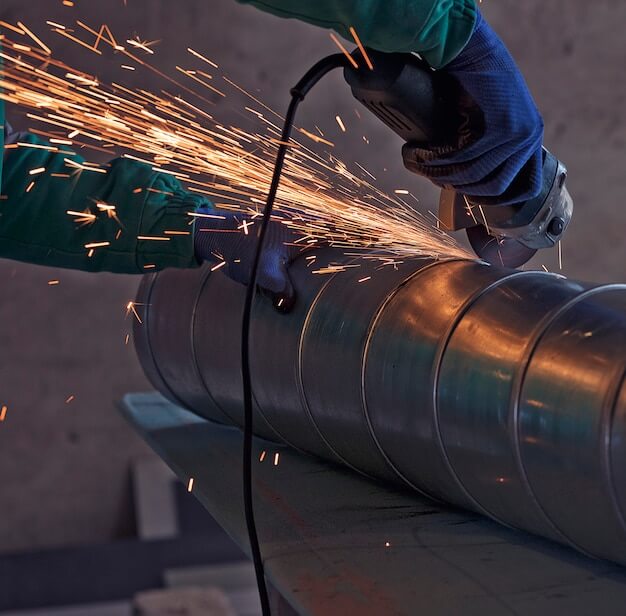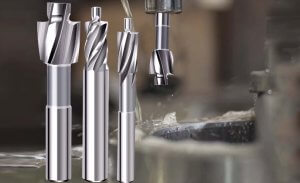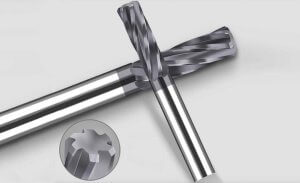Introduction: CNC Machining and 3D Printing Integration
The progression of manufacturing technologies has introduced pivotal dynamics like Computer Numerical Control (CNC) machining and 3D printing. CNC machining, an automated process that directs machines with highly precise instructions using a computer, provides accuracy often unavailable in manual operations. On the other hand, 3D printing or additive manufacturing builds parts layer-by-layer from digital files, enabling complex geometries and rapid prototyping. The convergence of these two distinct methods presents compelling possibilities in both industries. This integration constitutes procedures where a part can benefit from the advantages each technology offers; for instance, initial shapes are developed via 3D printing followed by precision finishing through CNC machining. The growing significance of integrating these technologies lies in allowing manufacturers to leverage both speed and preciseness, prompting faster production times without sacrificing detail and quality.
Basic Concept Behind the Integration
The integration of Computer Numerical Control (CNC) machining and 3D printing is a frontier in advanced manufacturing techniques that leverages both subtractive and additive processes. In essence, CNC machining excels at producing items with high precision and finish levels, while 3D printing is adept at creating complex geometric shapes with speed and minimal material waste.
This harmonization aims to enhance efficiency, offering novel opportunities but also inherent challenges. The complementary nature becomes evident when we consider an automotive industry application: Imagine fabricating a car’s dashboard. Initially, large basic structures are rapidly built using 3D-printing. Then, intricate detailing required for aesthetic appeal and functionality, such as indicator dials or control buttons, would be implemented through precise CNC operations.
- CNC Machining: Provides high precision and finish levels – ideal for intricate detailing.
- 3D Printing: Rapidly creates complex geometrical objects with reduced waste – suitable for constructing large components.
To summarize, integrating these technologies provides a robust solution capable of optimizing production timelines without compromising on quality, which might not always feasible if these techniques are used separately.
Opportunities in Combining CNC Machining and 3D Printing
Integrating CNC machining with 3D printing presents opportunities to leverage the strengths of both technologies. This combination allows for the production of complex parts with intricate geometries that may not be achievable using either method alone. Additionally, it offers the flexibility to create prototypes rapidly and efficiently, while also enabling the production of end-use parts with enhanced functionality and performance.
Challenges Faced in Integrating CNC Machining and 3D Printing
As promising as the integration of Computer Numerical Control (CNC) machining and 3D printing is, it’s not devoid of challenges. The first challenge comes with the high initial cost tied to acquiring this combined machinery. While these revolutionary technologies promise increased manufacturing efficiency and potential decrease in production costs over time, their upfront cost may be prohibitive for many businesses, especially small-scale entities.
- CNC Machine: Ranging from $5000 up to hundreds of thousands of dollars based on precision level and functionality.
- Industrial-grade 3D Printers: Typically start around $20000 and can reach six figures for high-capacity variants.
In addition to equipment cost, there exists the hurdle related to technical knowledge. There is a necessity for specialized skill-sets to operate, optimize and maintain these complex systems, which could mandate substantial training or hiring certified personnel – an associated increase in operational costs.
The final point of discussion revolves around the limitations in terms of usable material types. As innovative as both CNC machining and 3D printing are, they still come with constraints regarding the kinds of materials they can efficiently work with – particularly for combined systems. For instance, metals like aluminum or stainless steel can be gradually worn down by abrasive particulates during machining, while some thermosensitive polymers might prove challenging for 3D printing due to heat distortion risks, limiting design freedom and versatility.
Successful Integration of CNC Machining and 3D Printing: A Case Study
The successful case study here features Aerospace Manufacturing, Inc., a leading company in the production of high-precision aircraft components. To stay ahead in the highly competitive aviation industry, they decided to integrate computer numerical control (CNC) machining and 3D printing into their manufacturing process.
- CNC Machining: This technology automates subtractive manufacturing for complex structures, thereby enhancing precision and speed while reducing labor costs.
- 3D Printing: Also known as additive manufacturing, this enables rapid prototyping which not only significantly reduces product development iterate time but also allows intricate designs unachievable with traditional methods.
This innovative integration led to encouraging improvements in their workflow. They found that 3D-printed parts used as templates for CNC Machines meant less raw material waste and more consistent output quality. Additionally, leveraging these technologies side by-side allowed a faster transition from design to final part; hence speeding up delivery times. The adoption and seamless integration of both technologies effectively transformed and elevated the company’s production capacity and capabilities surpassing its competitors.
Future Aspects of Integrated Manufacturing
In the rapidly evolving domain of manufacturing, integrating CNC machining with 3D printing is set to become a significant trend. Evolving technologies aiming towards total integration promise improved efficiency and increased flexibility in production processes. With the innovative capabilities of additive manufacturing (3D printing) and the precision afforded by subtractive manufacturing (CNC machining), this convergence could revolutionize production lines for various industries.
- Trends and Predictions: The growing preference towards customization over mass production ushers in opportunities for 3D printing and CNC machining collaboration. Furthermore, innovations in cloud-based design software allow for seamless interoperability between these two methods, minimizing disruptions while maximizing output. It is anticipated that more companies will adopt this integrated approach as it offers cost-saving benefits and enhances product quality.
- Importance of Understanding Integration: For businesses and individuals involved in the manufacturing industry, understanding the interplay between 3D printing and CNC machining is crucial. Not only does it provide insights into optimizing production line activities, but also future-proofs operations against rapid technological advancements. Therefore, staying abreast with the developments in these combined technologies would ensure competitiveness within the sector.
Other Articles You Might Enjoy
- Navigating Excellence with CNC Machining Online Services in China
1. Introduction: The Digital Frontier of CNC Machining In this introductory section, we embark on a journey into the digital frontier of CNC machining, specifically focusing on the emergence and…
- The Advantages of Using Molybdenum in CNC Machining Applications
CNC Machining Applications and the Role of Molybdenum Computer Numerical Control (CNC) machining is a revolutionary process transforming raw materials into intricate components. This cutting-edge approach automates control of machining…
- The Role of Precision in CNC Machining: How Tight Tolerances Impact Cost and Quality?
Introduction: Understanding Precision in CNC Machining In manufacturing contexts, precision is epitomized by Computer Numerical Control (CNC) machining. In essence, CNC machining is a process utilized widely within the manufacturing…








